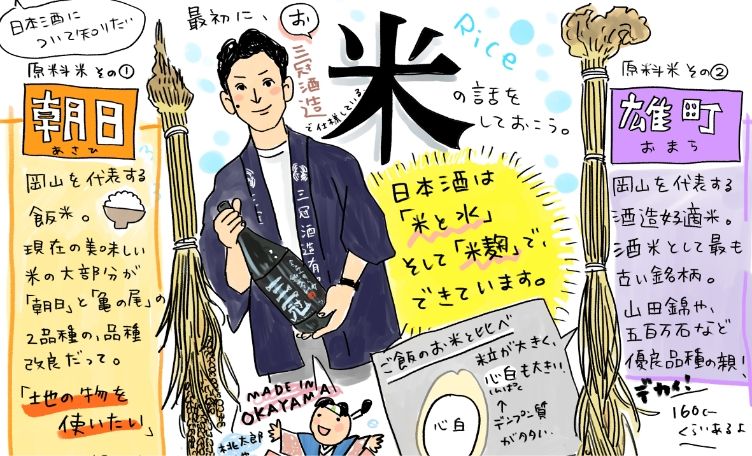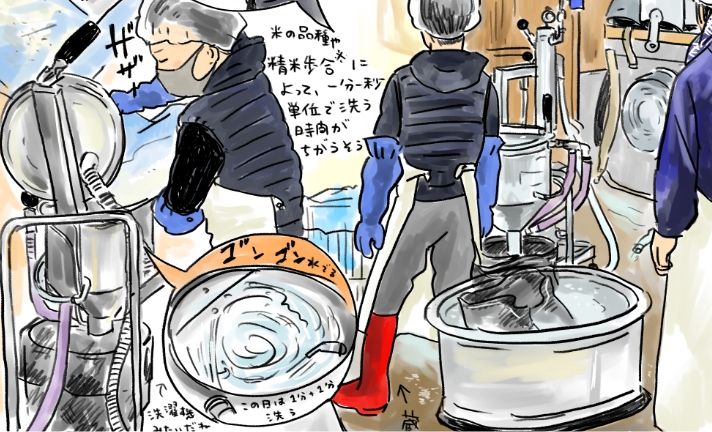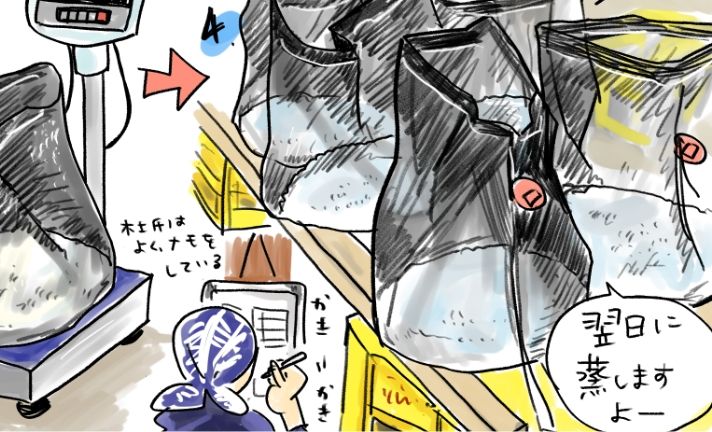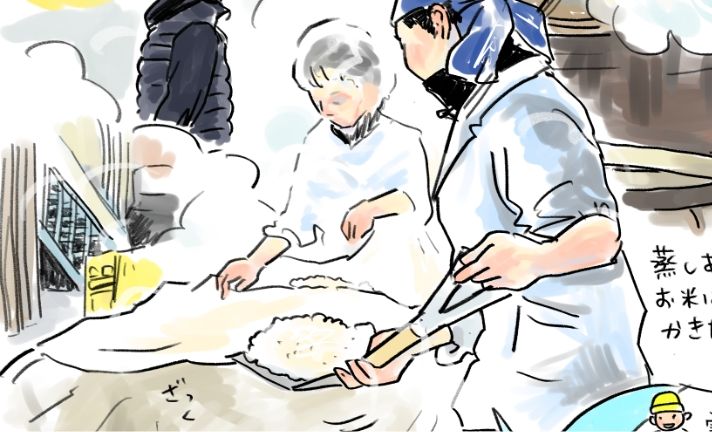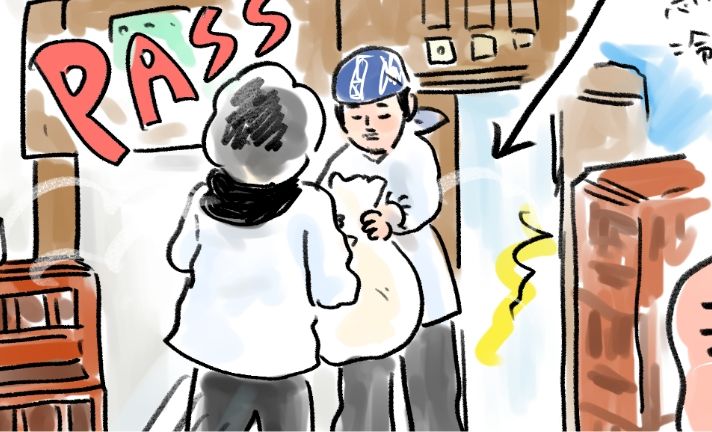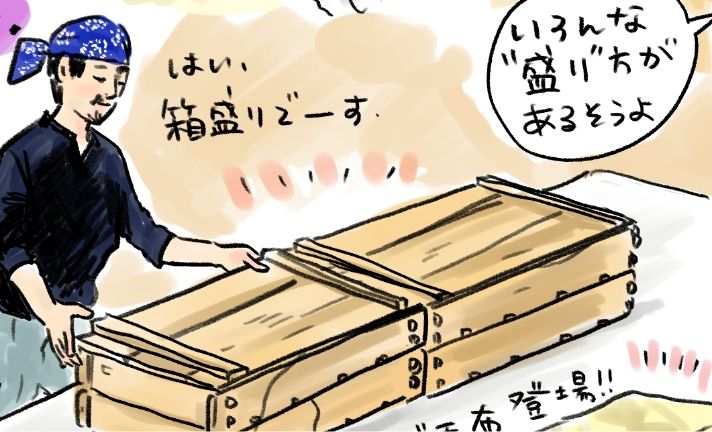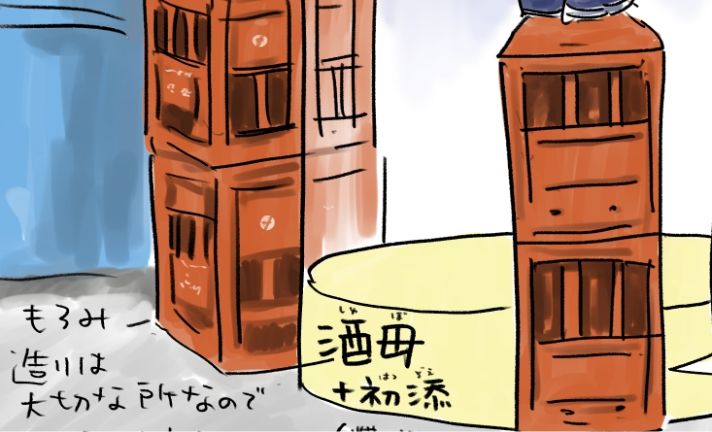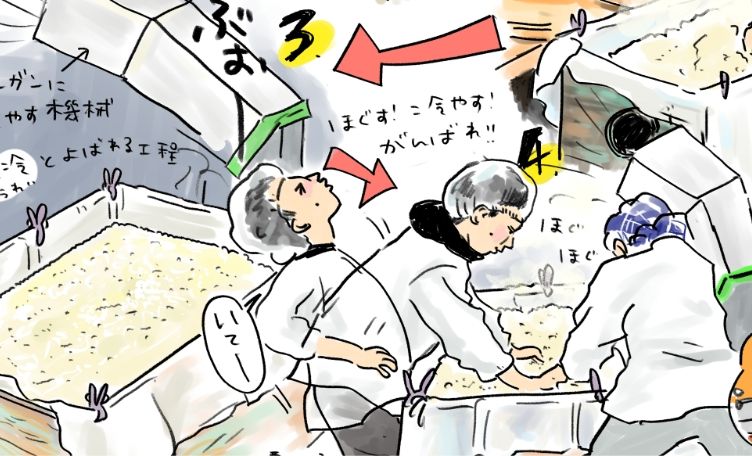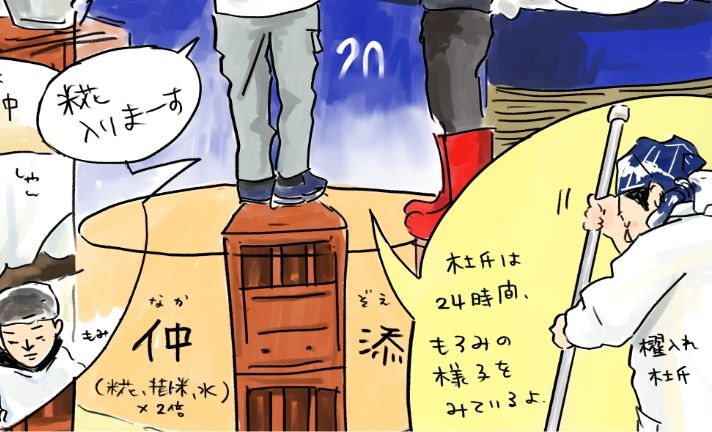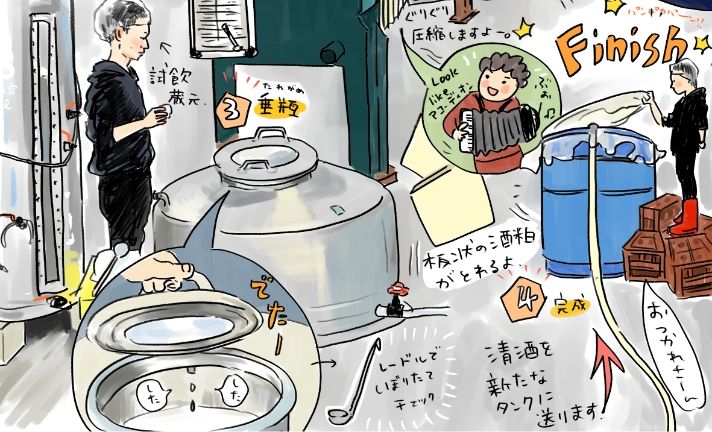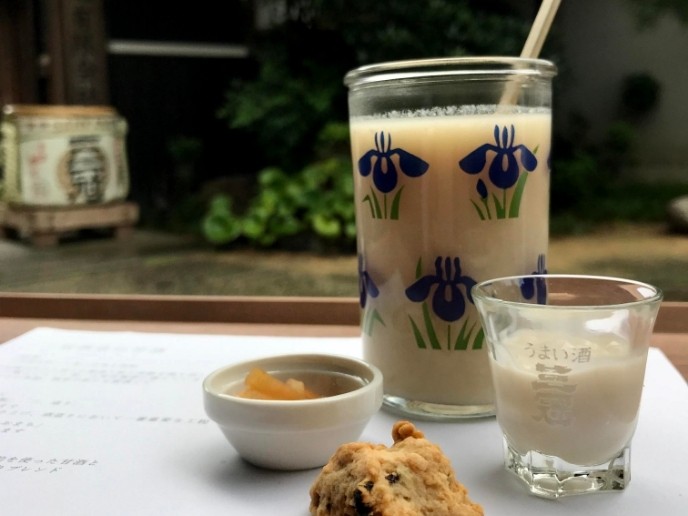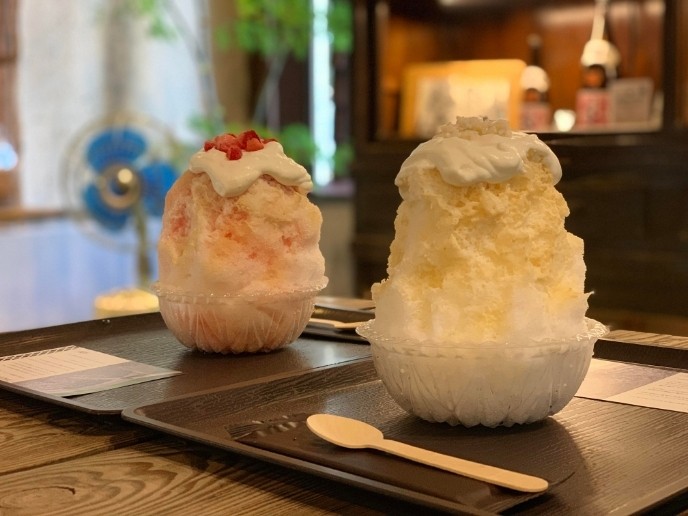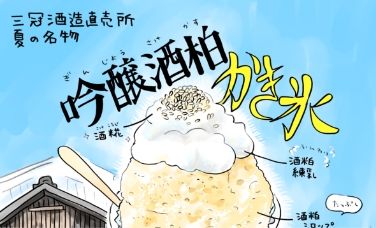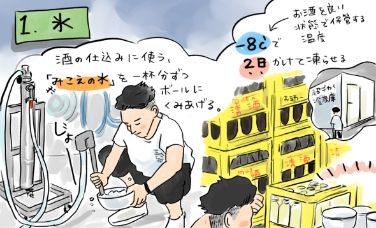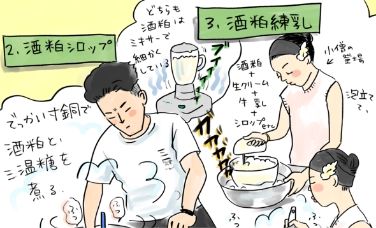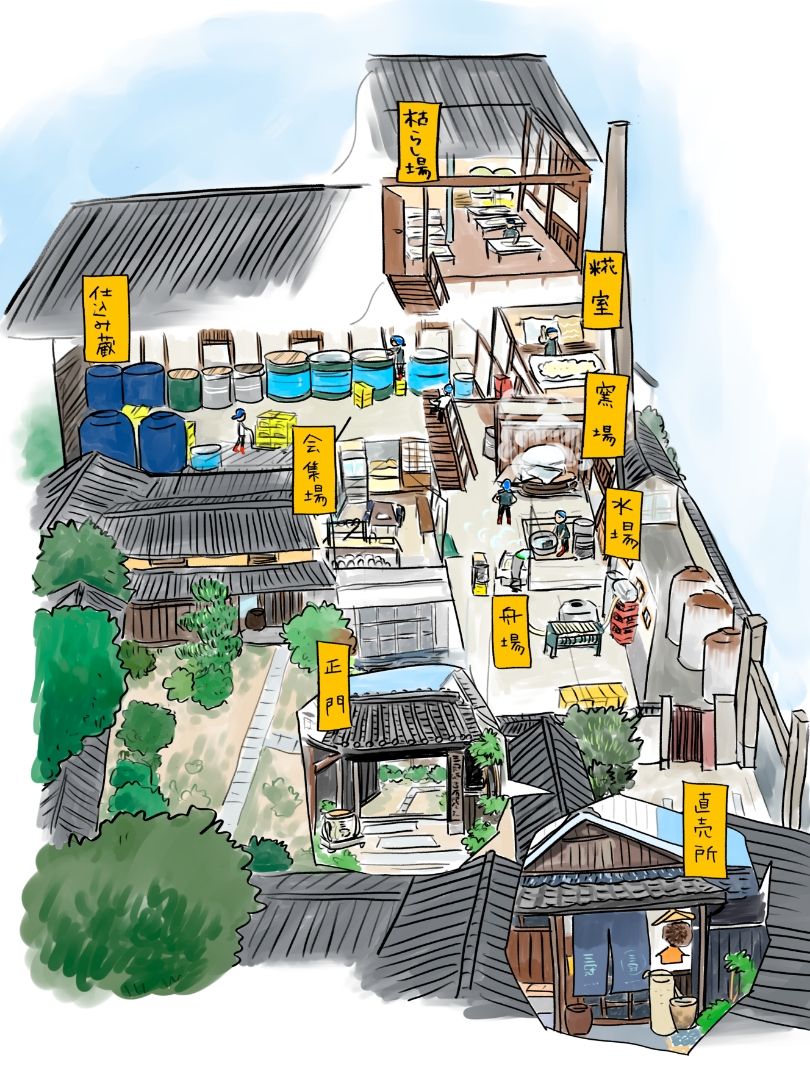
バーチャル
酒蔵見学
Virtual Sake Brewery Tour
ようこそ、
児島の老舗蔵元へ
Welcome to Kojima's long-established brewery.
倉敷市児島にある老舗蔵元「三冠酒造」の歴史は、1806年(文化3年)に倉敷市児島の山沿いの地にて、初代洲脇吉蔵氏が屋号「ますや」として酒造業を創業したことが始まりと伝えられています。
創業より受け継がれた備中杜氏の伝統技術と誇りを守りながら、魅力あふれる倉敷市児島の地酒を造り続けています。
The history of Sankan Shuzo, a long-established sake brewery in Kojima, Kurashiki City, dates back to 1806, when Kichizo Suwaki, the first generation of the family, established a sake brewery in Kojima, Kurashiki City, under the trade name "Masuya".
We continue to brew locally brewed sake in Kojima, Kurashiki City, which is full of charm, while maintaining the traditional techniques and pride of the Bitchu Toji brewers handed down from the time of our founding.
美味しい日本酒が
できるまで
The Process of Making Delicious
Sake until
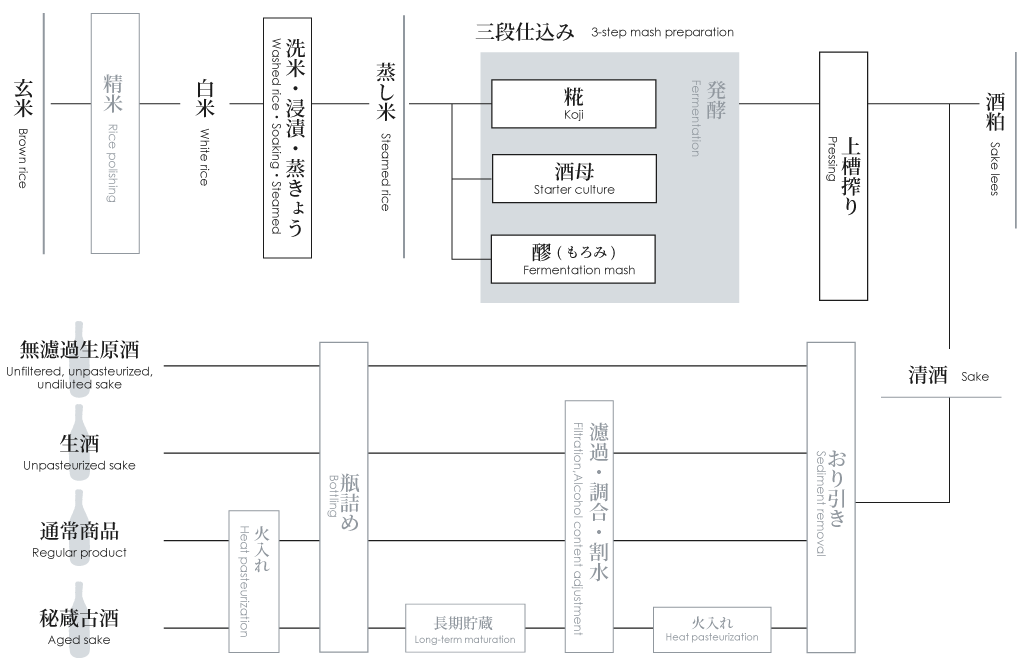
酒蔵内のご案内 Guide to the Sake Brewery
創業より200年を超える歴史を持つ蔵元の酒造り工程をご案内いたします。
ぜひお気軽にご見学ください。
We will guide you through the process of sake brewing at a brewery that has been in business for
over 200 years.
Please feel free to take a tour!
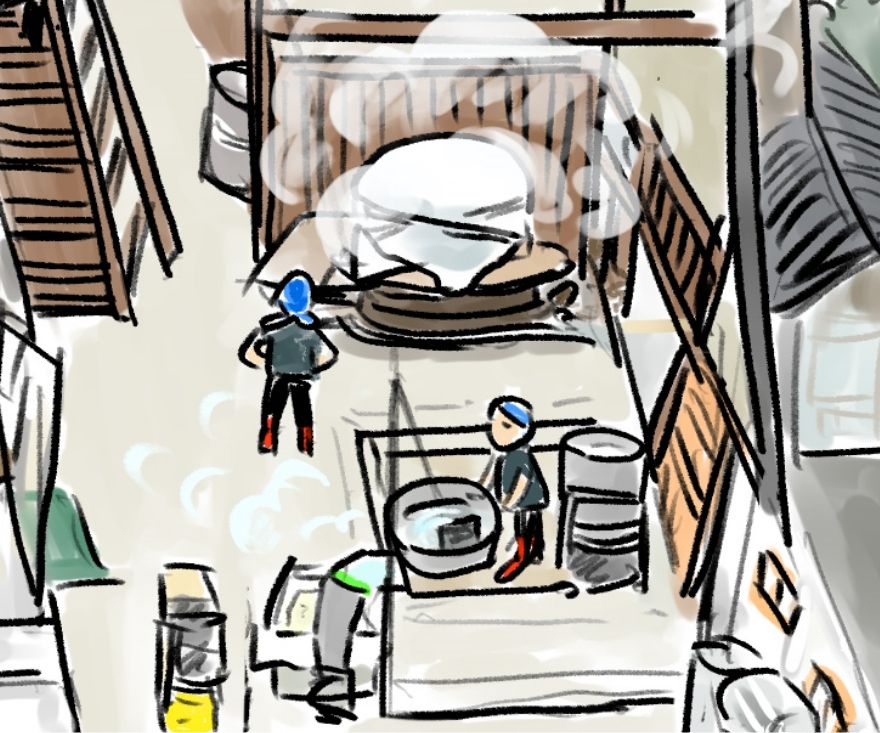
窯場・水場 Kiln/watering place
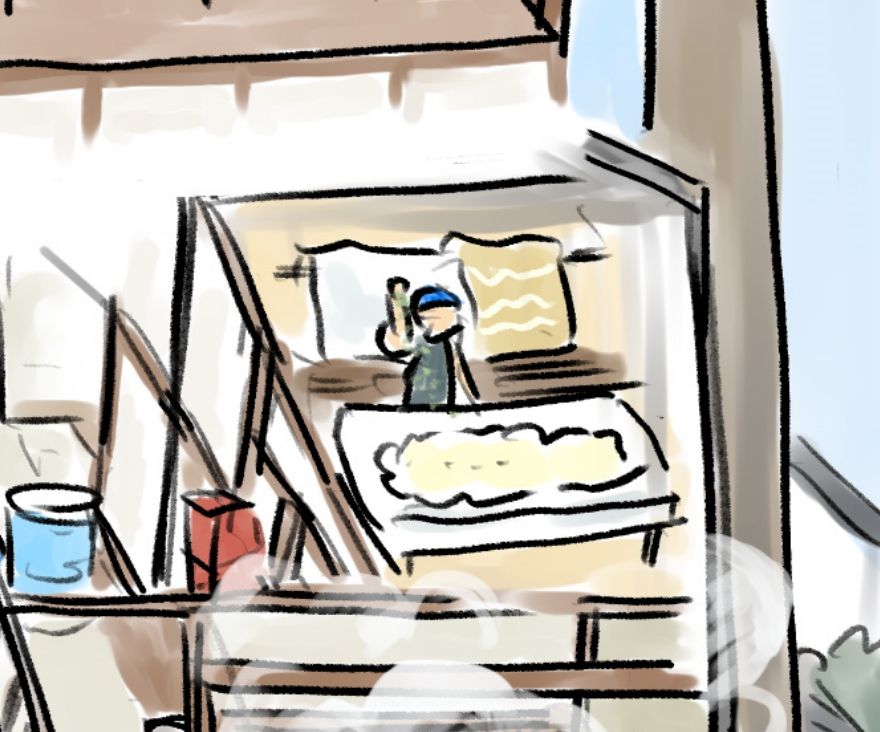
糀室 Koji making room
せいきく 製糀 Koji making
古くから「一糀(こうじ)、二もと、三造り」と言われ、日本酒造りで最も重要とされる工程が「製麹」と呼ばれる「糀造り」です。
糀とは、糀カビが生えたお米のことで、主に酵素を分泌させたものです。こそはとても重要な役目を持ち澱粉(でんぷん)を糖分に変化させます。
日本酒では、黄糀菌(きこうじきん)の胞子を種糀(たねこうじ)として蒸したお米にふりかけ、約2日間培養することで酵素を分泌させ、お米のでんぷんを糖化していく役割を果たします。
It has been said since ancient times, "One Koji, Two Mentors, Three Brews," and the most
important process in sake brewing is the "Koji Making" process.
Koji is rice with malt mold growing on it, which mainly secretes enzymes. Koji plays a
very important role in transforming starch into sugar.
In the case of sake, spores of the yellow malt fungus are sprinkled on steamed rice as
seed koji and cultivated for about two days to secrete enzymes that are responsible for
saccharifying the starch in the rice.
04
ひきこみ 引き込み Transport of the koji in the koji muro
05
たねきり 種切 Inoculation of rice in koji
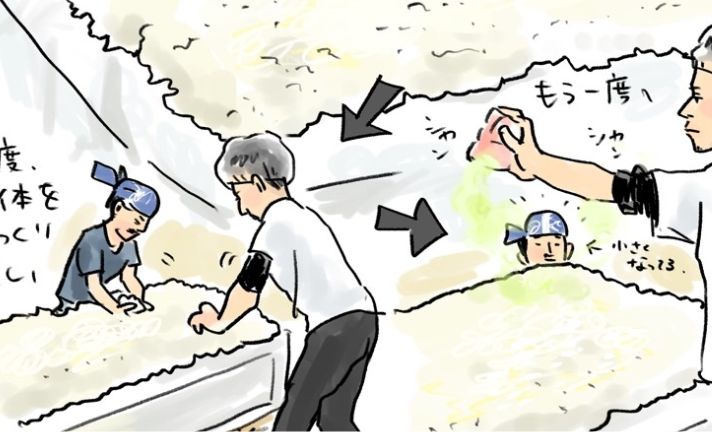
温度が一定になった蒸米に、種糀を均一にふりかけていきます。
表側にふりかけたら蒸米を返し、反対側も同様の手順を繰り返します。
Sprinkle seed koji evenly on the steamed rice at a constant temperature.
After sprinkling on the front side, turn the steamed rice and repeat the same
procedure for the other side.
種糀をふりかけ終えた蒸米は、山のようにひとまとめにして、布・毛布にくるんで寝かせます。こうすることで保温をしながら糀菌を蒸米にしっかりと定着させます。
After sprinkling the seed malt on the steamed rice, gather it into a pile and wrap it in a cloth or blanket and lay it down. In this way, the malt bacteria are firmly fixed on the steamed rice while keeping it warm.
06
きりかえし 切り返し Kirikaeshi
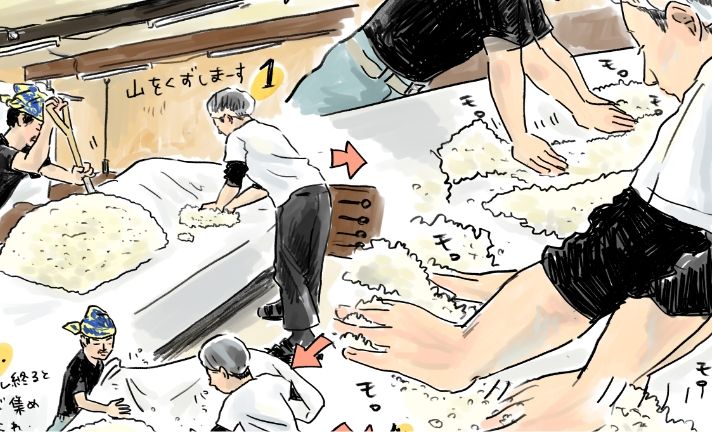
数時間寝かせた後、糀菌が繁殖して米粒同士がくっついた状態になるので、蒸米の山を崩して、手のひらを使ってバラバラにほぐしていきます。
十分にほぐし終えたら再びひとまとめに集め、布・毛布・ビニールにくるんでから翌日まで寝かせます。
After letting the rice sit for a few hours, the malt bacteria will have
multiplied and the rice grains will be stuck together, so break up the pile of
steamed rice and use the palm of your hand to loosen it into pieces.
After the rice is fully loosened, gather them together again and wrap them in a
cloth, blanket, or plastic, then let them sleep until the next day.
07
もり 盛り Mori
08
なかしごと・しまいしごと 仲仕事・仕舞仕事 Naka-shigoto・Shimai-shigoto
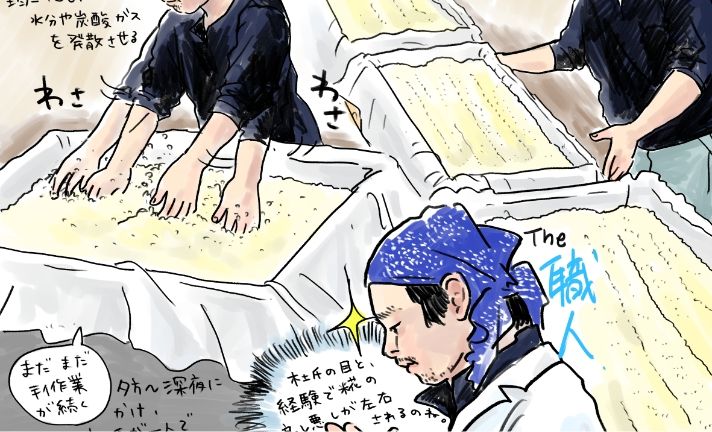
糀箱の中でお米の温度が上昇してくるので、内側と外側の温度や水分を均一化するため、箱内のお米をほぐしていきます。数時間ごとにこの作業を繰り返します。
As the temperature of the rice rises inside the Koji box, we loosen the rice inside the box in order to equalize the temperature and moisture between the inside and outside. This process is repeated every few hours.
夕方から深夜にかけて、熟練の杜氏が一人で行うこの作業は、職人の目と経験が頼りの、とても重要な工程になります。
This is a very important process that relies on the eyes and experience of the craftsmen, and is carried out by a skilled master brewer alone in the evenings and late at night.
09
でこうじ 出糀 Dekoji
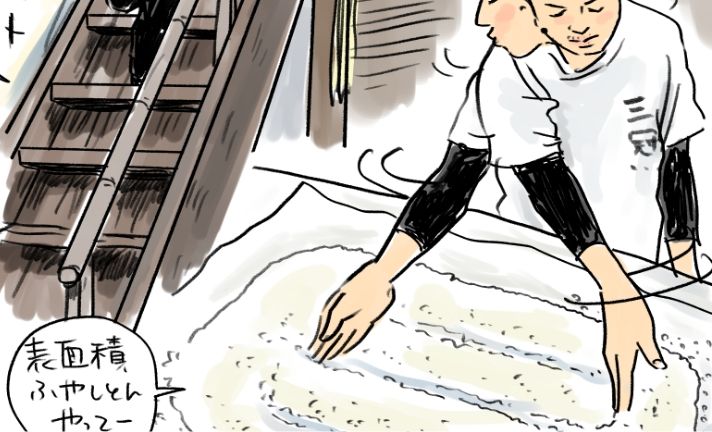
適切な温度になった糀米を糀室から出し、量を測ってから枯らし場へと運びます。
運んだ糀米は平らに広げられ、糀米の温度を下げ、水分を飛ばして糀菌の活動を止めます。
When the malt rice has reached an appropriate temperature, we take it out of the
Koji Room, measure the amount, and then carry it to the withering area.
The transported malt rice is spread out flat to lower the temperature of the
malt rice and remove the moisture to stop the activity of the malt bacteria.
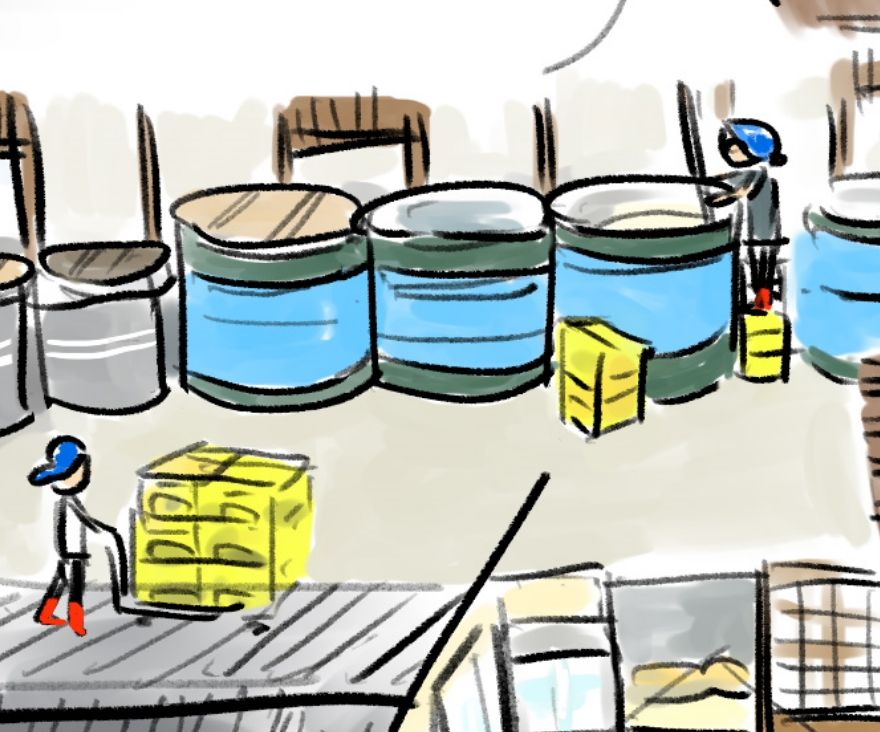
仕込み蔵 Brewery
10
しゅぼづくり 酒母造り Starter culture making
酒母とは、もろみの発酵を促す優良な酵母を大量に培養したもののことで、蒸し米・水・糀に酵母を加えて造られます。
酒母は別名 酛(もと)とも呼ばれ、文字通り日本酒造りには欠かすことができない日本酒の源とも言えます。
Sake mash is made by adding yeast to steamed rice, water, and malt, and
cultivating a large amount of excellent yeast that promotes fermentation of the
mash.
It is made by adding yeast to steamed rice, water, and malt. Also known as
"moto," shamo is literally the source of sake, and is indispensable for sake
brewing.
仕込み水へのこだわり Attention to the water for brewing
昔、この地の沿岸は塩田で埋め尽くされ炎天下の入浜式塩田で働く浜子達の間では「みこえの水」と呼ばれ近隣の浜子達は列をなし、喉を潤す冷たい旨い水として重宝されました。
海の近くなので「塩分があるのでは」と言われますが、花崗岩の地質で磨きぬかれた清冽な純水です。
水質は硬水で素材の味を十二分に引き出すとてもすっきりとした水です。
水源は当蔵から300m程離れた山裾にあり、濃厚辛口の当蔵の酒の味を醸すためには欠かすことのできない大切な水です。
In the olden days, the coast of this area was filled with salt fields, and the water was called "Mikoe no Mizu" by the beachcombers working in the salt fields.
The water is said to be salty because of its proximity to the sea, but it is limpid and pure, polished by the granite geology.
The quality of the water is hard, and it is very refreshing and brings out the flavor of the ingredients more than enough.
The source of the water is located at the foot of a mountain about 300 meters away from our brewery, and it is an important water that is indispensable for brewing the rich, dry taste of our sake.
CLOSE
もろみづくり もろみ造り Fermentation mash making
もろみとは、酒母を土台にして、糀、仕込水、掛米(蒸し米)を順々にタンクに入れて発酵させた、どろどろした液体のことです。
ここから4日間かけて、酒母を土台にしたもろみ造りに取り掛かります。
From this point on, it takes four days to make the molasses, which is the foundation of
the brewing process.
Moromi brewing is also called "shikomi," and at Sankan Shuzo we use the “3-step
mash preparation" method, in which the brewing process is divided into three stages.
さんだんじこみ 三段仕込み 3-step mash preparation
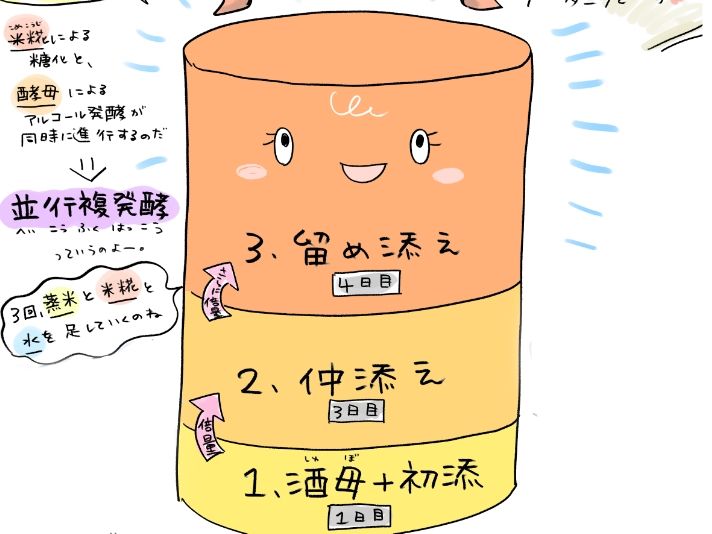
もろみ造りは仕込みとも呼ばれ、三冠酒造では仕込みを三段階に分けて行う「三段仕込み」という手法を取り入れています。
三段仕込みとは「初添」「仲添」「留添」の三段階に分けて仕込みを行う段仕込みのことです。
一度に仕込むのでなく、仕込みを段階に分けることで、雑菌の繁殖を抑えつつ酵母の増殖を促し、もろみの温度を管理しやすくなります。
段仕込みは、日本酒造りの長い歴史の中から現代に受け継がれた、先人たちの知恵の賜物です。
Moromi brewing is also called "shikomi" (brewing), and at Sankan Shuzo we
use a method called "sodan shikomi" (3-step mash preparation) in which the
brewing process is divided into three steps.
3-step mash preparation is a method of brewing in three steps: hatsuzoe,
nakazoe, and tomezoe.
By dividing the brewing process into steps instead of brewing all at once, it is
easier to control the temperature of the mash while suppressing the growth of
bacteria and encouraging the growth of yeast.
Preparing the fermentation Mash in steps is the result of the wisdom of our
ancestors, handed down from the long history of sake brewing to the present day.
11
はつぞえ 初添 Hatsuzoe
仕込みタンクに移した酒母に糀、仕込水、掛米を加えて、しっかり撹拌させます。
Add malt, brewing water, and rice to the brewing tank, and stir thoroughly.
12
おどり 踊り Odori
初添の翌日は、酵母を増殖させるために一日寝かせます。
The day after the hatsuzoe, let the ferment sit for a day to allow the yeast to multiply.
13
なかぞえ 仲添 Nakazoe
14
とめぞえ 留添 Tomezoe
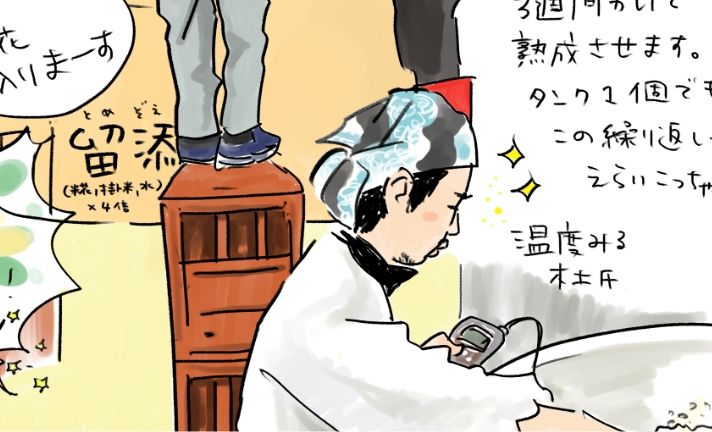
第三段階の仕込みで、三段仕込みの最終段階になります。
前日の仲添の更に2倍の量の糀、仕込水、掛米を加えて、しっかり撹拌させます。
This is the third step of brewing, and the final step of 3-step mash
preparation.
We add twice as much malt, water, and rice as the previous day's Nakazoe, and
stir the mixture thoroughly.
その後、およそ20日から30日間かけて発酵させることで、熟成もろみが造られます。
After that, the fermentation process takes about 20 to 30 days to produce the aged malt.
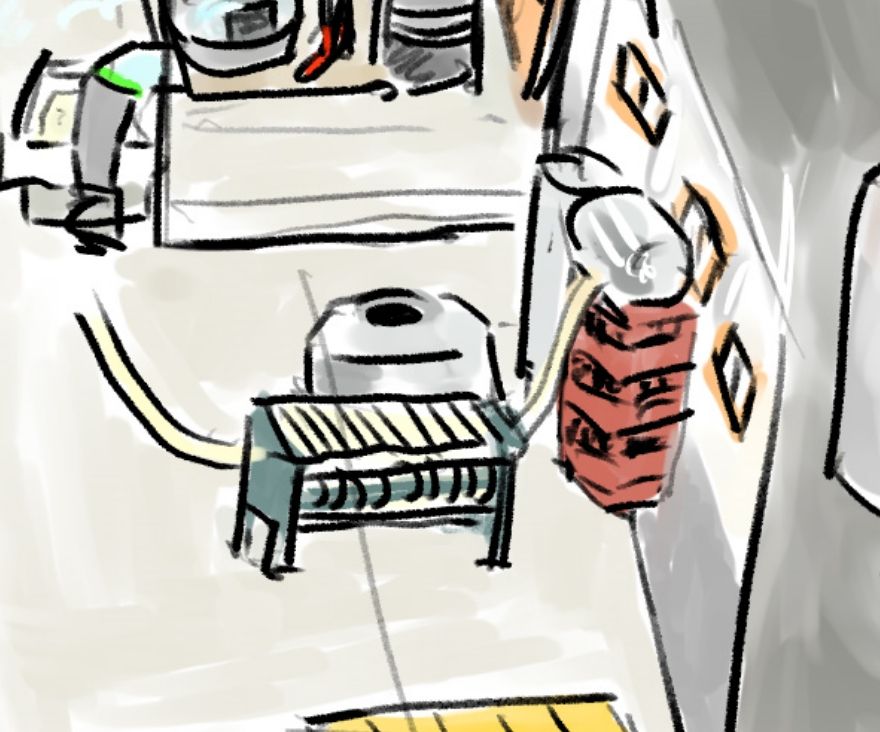
舟場 Funaba
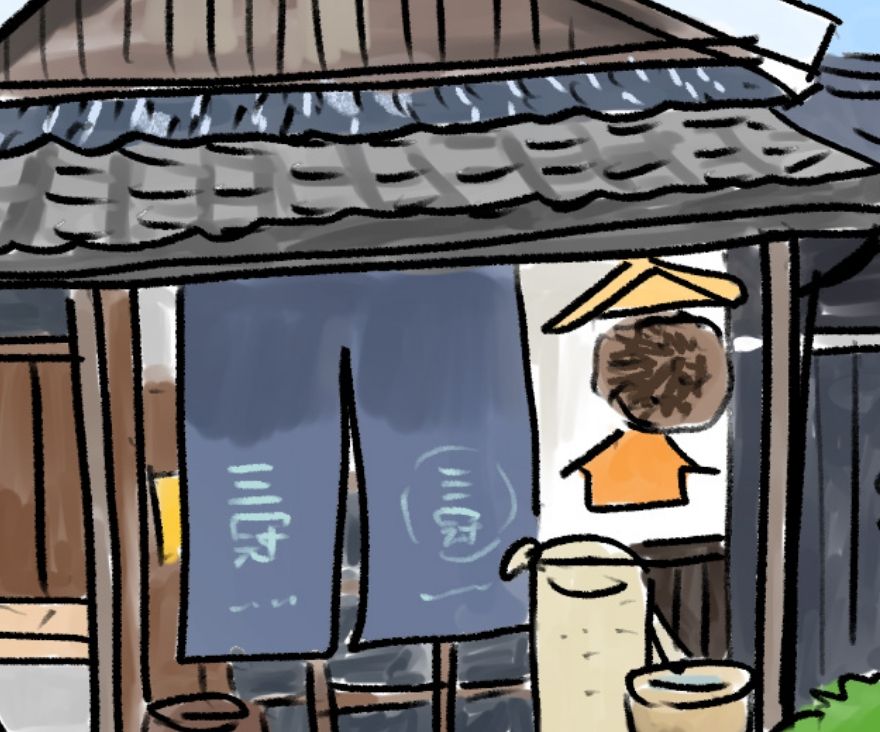
三冠酒造酒類直売所 Sankan Shuzo Liquor Direct Shop
出来上がった日本酒は、三冠酒造の直売所(実店舗・オンラインショップ)などで購入いただけます。
酒造りの伝統を受け継いだ濃厚辛口な日本酒を、ぜひ一度お召し上がりください。
The finished sake can be purchased at Sankan Shuzo's direct sales outlets (actual
stores and online stores).
We hope you enjoy this rich, dry sake that has inherited the tradition of sake brewing.
オンラインショップ Online Shop
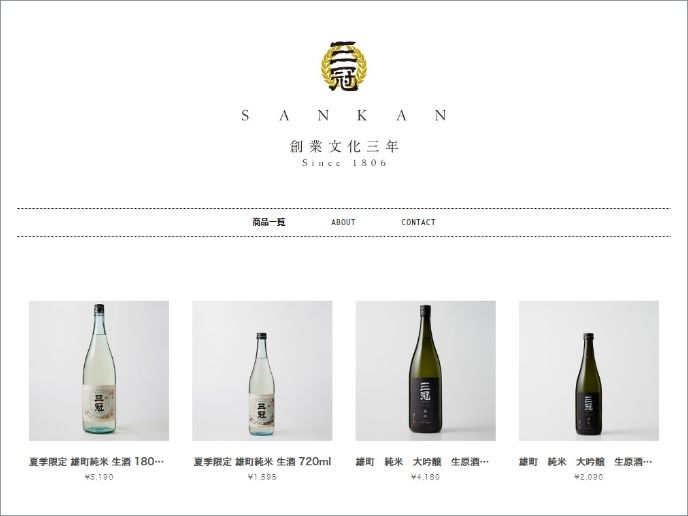
実店舗 Real Store
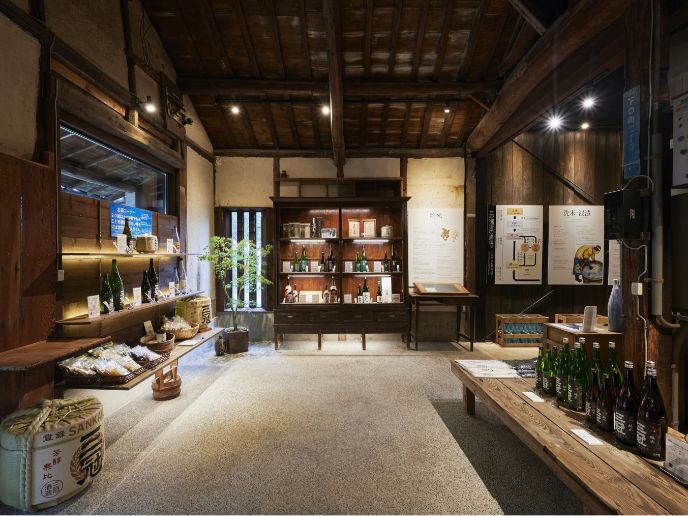
店舗情報 Store Information
〒711-0906
岡山県倉敷市児島下の町2-9-22
TEL 086-441-4440
営業時間 10:30~16:30(火曜定休)
2-9-22 Shimono-cho, Kojima, Kurashiki City,Okayama
Prefecture 711-0906 Japan
Telephone 086-441-4440
Open Hours 10:30 am - 4:30 pm
Closed on Tuesdays
※かき氷は夏季、甘酒は冬季限定のご提供となります。
Shaved ice is only available during the summer and amazake is only available during the winter.
